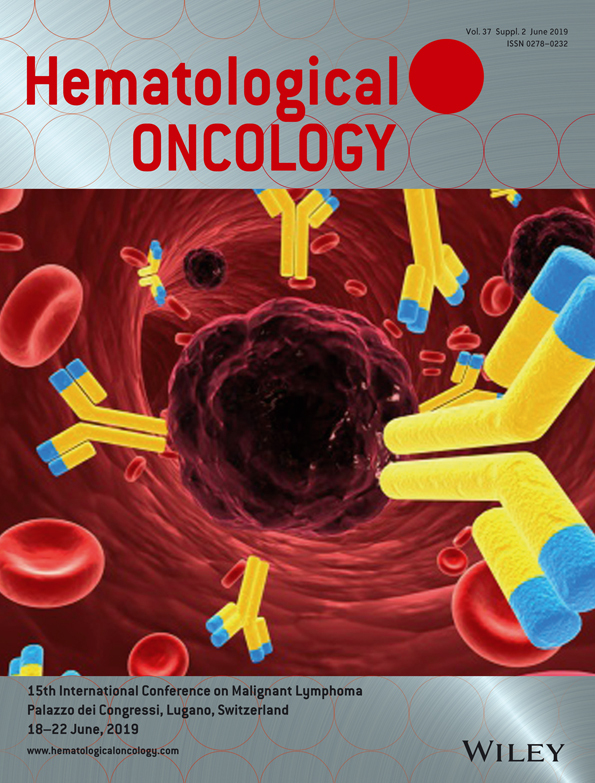SAMD14/NEURABIN-I AS BCR-ANTIGENS OF PRIMARY CENTRAL NERVOUS SYSTEM LYMPHOMA
Introduction: Primary central nervous system lymphoma represents a distinct subgroup of DLBCL with exclusive manifestation in the CNS, which is therefore challenging to treat. PCNSL often harbour mutations in the BCR pathway and have overrepresented IGVH4-34. Polyreactive, low affinity BCRs have been reported recently for PCNSL.
Methods: To address the role of chronic antigenic stimulation in primary central nervous system lymphoma, we searched for autoantigens by expression cloning of PCNSL B-cell receptors (BCRs) and subsequent screening for antigens in the spectrum of self antigens and antigens of infectious origin. Identified antigens were verified by immunoassays and analyzed for immunogenic differences in respective cases by sequencing and proteomic means. ABC type DLBCL cell lines transfected to express recombinant PCNSL BCRs were used as modell for PCNSL and the effects of addition of SAMD14/neurabin-I on BCR activation and cell proliferation were studied. Moreover targeting PCNSL BCRs was investigated as a proof of principle by using an immunotoxin comprising the common BCR binding epitope of neurabin-I conjugated to a truncated form of Pseudomonas Exotoxin A by cytotoxcity and apoptosis assays.
Results: Sterile α-motif domain containing protein 14 (SAMD14) and neural tissue-specific F-actin binding protein I (neurabin-I) were identified as autoantigenic targets of the BCRs from 8/12 PCNSLs. Neurabin-I contains a SAM domaine with high homology to SAMD14. In the respective cases, SAMD14 and neurabin-I were atypically hyper-N-glycosylated (SAMD14 at ASN339 and neurabin-I at ASN1277), explaining their immunogenicity. PCNSL-patients had SAMD14/Neurabin-I autoantibodies in relevant titres. Addition of SAMD14 and/or neurabin-I induced BCR pathway activation and proliferation of aggressive lymphoma cell lines transfected with SAMD14-/ neurabin-I-reactive BCRs. Moreover, the BCR binding epitope of neurabin-I conjugated to truncated Pseudomonas exotoxin A killed lymphoma cells expressing the respective BCRs.
Conclusion: Our results support the role of chronic antigenic stimulation by speicific and posttranslationally modified autoantigens in the pathogenesis of a subgroup of PCNSL. Studies on the frequency of hyper-N-glyocsylated SAMD14/neurabin-I isoforms and of SAMD14/neurabin-I autoantibodies in prospectively collected sera of patients from PCNSL rials are necessary to better determine the “real” proportion of the SAMD14/neurabin-I-reactive subgroup in PCNSL. Finally, different therapeutic concepts for this subgroup will be presented.
Keywords: B-cell receptor (BCR); immunoglobulins (Ig); primary CNS lymphoma (PCNSL).
Disclosures: Thurner, L: Consultant Advisory Role: MERCK; Other Remuneration: Travel Funding to Meeting: JANSSEN.




